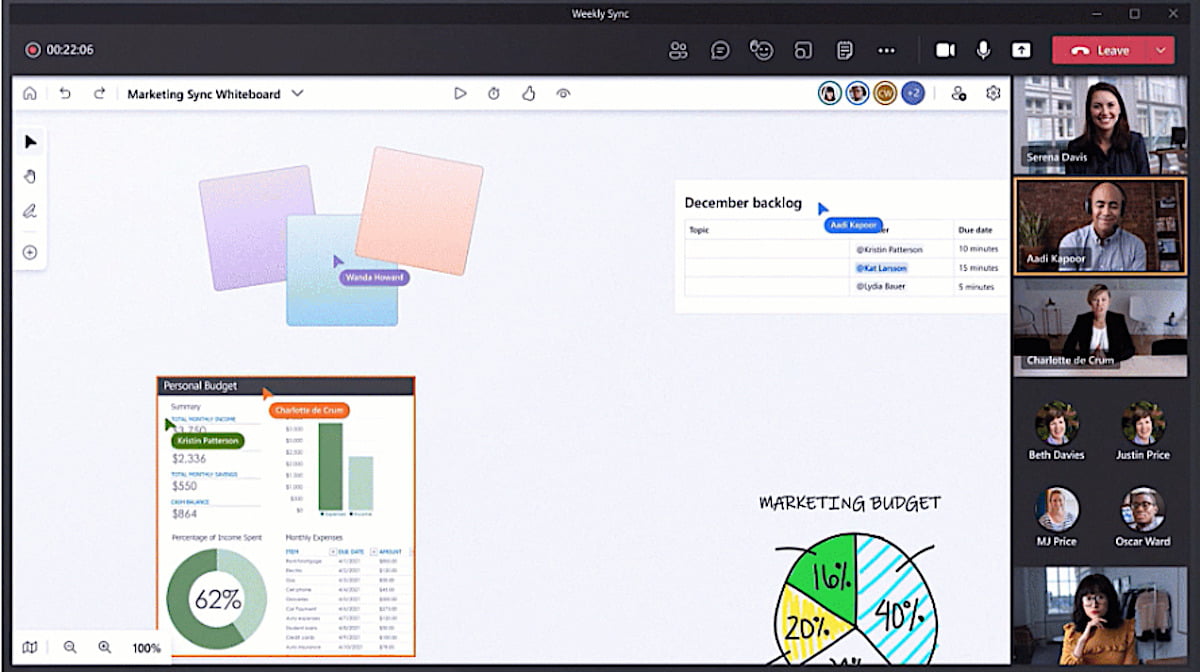Fluid components are designed to aid synchronous and asynchronous work for “hybrid” remote teams
Microsoft will expand the use of its Fluid components to a wider range of productivity and collaboration tools, including Outlook, OneNote, and Whiteboard — part of the company’s ongoing effort to change how people interact with documents.
Fluid components – heralded by Microsoft as “atomic units of productivity” when they were launched two years ago – are small apps such as tables, charts, and lists that can be inserted into different Microsoft 365 tools and updated by multiple users in real-time.
Although it has been slow to roll out the features, Microsoft in May unveiled plans to introduce the components to the chat function in Teams. As a continuation of those plans, unveiled last week, Fluid components will be expanded to Teams meetings, as well as the Outlook, OneNote, and Whiteboard apps. The overall goal: improve meetings for users.
The focus is on the creation of “components” relevant to meetings, such as a shared agenda, with discussion points automatically added to a dedicated OneNote page and simultaneously made accessible from Outlook email and calendars. Notes and tasks assigned in Teams during a meeting can also be synced back to OneNote for all attendees to view.
“These Fluid components ensure meeting attendees have a clear view of what was covered and how to proceed forward,” Marissa Salazar, senior product marketing manager at Microsoft, said during a briefing.
Microsoft will begin a private preview for Fluid components in Outlook, OneNote and Whiteboard this fall, with wider availability expected “early next year,” a spokesperson said. The feature will be available to Microsoft 365 commercial customers only. Meanwhile, Fluid components in Teams’ chat is currently in private preview and with a full release in August.
The introduction of Fluid components to Microsoft’s collaboration and productivity apps amounts to a shift in focus from individual files to a more flexible and collaborative approach to documents within Microsoft 365.
“One of the big criticisms leveled against Microsoft with Office 365 is that it simply took the desktop apps of Word, Excel, etc .and recreated them in the cloud; it didn’t really do much to change or modernize the way people worked, except that you now accessed the apps in the cloud,” said Angela Ashenden, a principal analyst at CCS Insight.
“The Fluid components are more of a step forward in changing how we think about content, recognizing that while documents have their place, not everything has to be a document in and of itself,” she said.
Microsoft is not the alone in seeking to better connect collaboration and productivity apps. Rival Google introduced its smart canvas “building blocks” last month; it’s a similar concept that links information between Workspace apps such Docs and Sheets with simple polls and checklists updated simultaneously across applications. Startups such as Coda, Airtable, and Quip are also making similar moves.
As the market leader, Microsoft has an advantage, “so if it gets this right, it has the user base to build upon,” said Ashenden.
Among the other changes announced last week were numerous updates to Microsoft’s Whiteboard app due out this summer, including a new UI, improved “inking” using a mouse input, and the addition of features such “collaboration cursors” to show what coworkers are doing when collaborating and a “laser pointer” for highlighting information to colleagues.
COMPUTERWORLDNEWS



